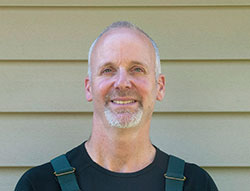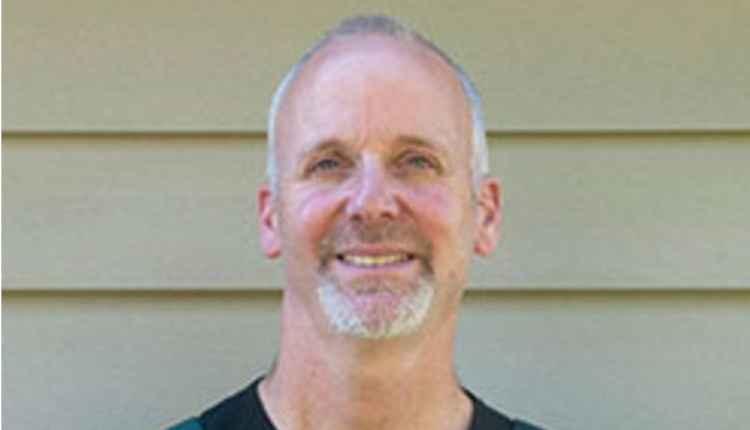The author is a partner and large animal veterinarian at Thumb Veterinary Services in Deckerville, Mich.

Jack always preferred that we got to his place promptly before afternoon chores, so as not to disrupt his milking time and routine. As occasionally happens, my schedule did not allow much time for a thorough exam prior to his 4 p.m. start of chores. A “not that happy” Jack met me at the milk house and summoned me back to his place first thing in the morning for a more detailed, quiet look at his black and white beauty.
Jack will always be remembered as a great dairyman. His hard work and dedication to caring for his excellent herd landed him high production DHIA awards year after year. I recall a couple of occasions observing the milking routine in his small herd done by family members, all well versed in the attributes of proper milk harvest.
Needless to say, the attention given to milking clean, dry, and well-stimulated udders left an impression on me. I would have to assume his herd of milk cows enjoyed the consistent practices of calm faces, voices, and actions to achieve a great yield.
An example on the other end of the spectrum also comes to mind. You, too, may have encountered a “jacked up” bawling herd of cows anxiously waiting to be milked after a several-hour delay due to breakdowns, power outages, parlor construction, and so on.
These energized milk cows are definitely excited and need little coaxing to get going on their daily journey to be milked. Pushing them to the parlor or the milk stations is no problem. It can resemble the I-75 interstate headed north through Michigan for Labor Day weekend . . . all gas and little braking!
What areas can we address to improve production and ensure timely milk harvest with attention given to maintaining a calm environment for our cows?
It starts in the barn
Cows love routine. We know that. The methodical trip to the parlor, or the hum of the vacuum pump in the tie stall barn, signals the start of a new milking.
How our cows are prompted out of their beds and pens speaks much about excellent or inadequate stockmanship skills. It doesn’t take much of a “bad day” on our part to bring adrenaline into a cow’s bloodstream, generally blocking the needed oxytocin prime upon udder preparation.
The daily routines done in a consistent manner, including the variety of human chirps, whistles, and quiet gestures used correctly, act as early morning alarm clocks to get the cows up and going without getting them overly excited. These “cow-friendly” techniques work well, and the cows typically respond well to them. They just “know” what’s going on when they hear or see these consistent patterns prior to milking time.
Excessive shouting, hollering, or ranting only get the cows edgy and lead to a poorer quality milking experience with frustrated milkers, excitable cows, and compromised milk production. I acknowledge that it’s hard to break habits on our part, but excessively loud voices are best kept out of the barns. Save them for Sunday morning church service perhaps. At least it could be classified as making a “joyful noise” there.
Holding pen pointers
I spend many hours every week observing cows in holding pens. What I have seen is a rather large variation in cattle behavior from farm to farm. On some of the farms, the time spent in the holding pen is quite short (less than 45 minutes) either two or three times a day. But on others, due to pen/parlor design and size, the cows spend an excessively long time (two hours or more) waiting to be milked.
Many farms utilize crowd gates to advance the milking group to the front of the pen. It takes a dedicated team to all be on the same page in the operation of the crowd gate and entrance into the parlor to prevent undue consequences.
This holding area deserves our continued attention to provide fresh air, cooling strategies, and low stress cattle movement. Take the time needed to closely watch the behavior of your herd in the holding area. Are some cows chewing their cud? Are heads relaxed in normal positions? Are the entrance areas of the parlor well lit? Is the flooring sufficient with minimal slipping?
And remember again that very little noise is required to move calm cows in suitable milking facilities. This all sets the stage for efficient milk harvest done in a timely fashion.
A positive experience
When I started practicing vet medicine, one area of special interest to me was milking system evaluations and observations at milking time. I was fortunate to have a great mentor and partner in practice with similar interests, so we spent a decent amount of time evaluating the mechanics of the systems (pumps, regulators, claws, liners, and so forth).
This is still an area of great interest and opportunity within the industry. Positive results have been shown on many occasions by following NMC (National Mastitis Council) standards. Where I failed often was observing closely what the cows were telling me. How was their milking time experience?
Observing the loading and unloading of the parlor or stall barn deserves some quiet attention. Visually assessing the heads and feet tell quite a story as procedures are initiated. Proper udder prep has been covered in detail in many articles and through milker training courses on numerous farms, so we all know what to do, but do your cows receive the best shot at a relaxed initiation of milk harvest?
Recent research suggests that failure to properly “prime the pump” causes a significant number of “bimodal” milk drops (for example, initial cistern milk flow, then low flow until glandular milk ejection resumes). These abnormal milk flow experiences exacerbate dry milking early upon unit attachment, which is responsible for the loss of several pounds of yield that milking.
It is difficult to achieve proper milk ejection without the cow being a part of it. I guess that’s why the cow is special. Let’s all revisit our (and our cow’s) excitement level during its harvest time.
I hope this writing encourages the hardworking folks who set their alarms early each and every day! Wishing you all the best this growing season and during these summer months that we’ve looked forward to.








